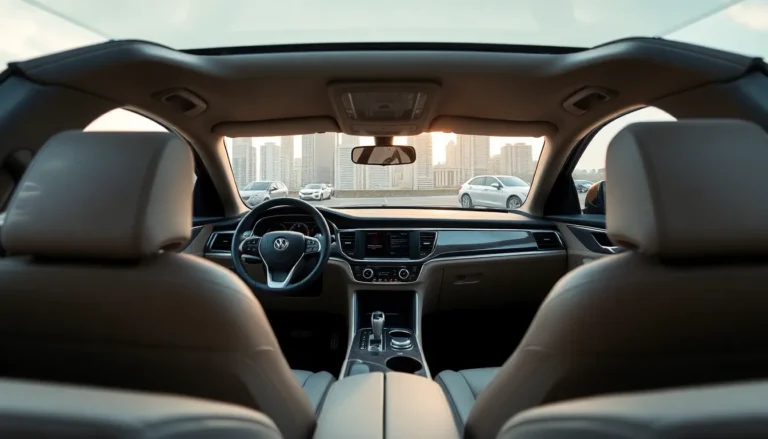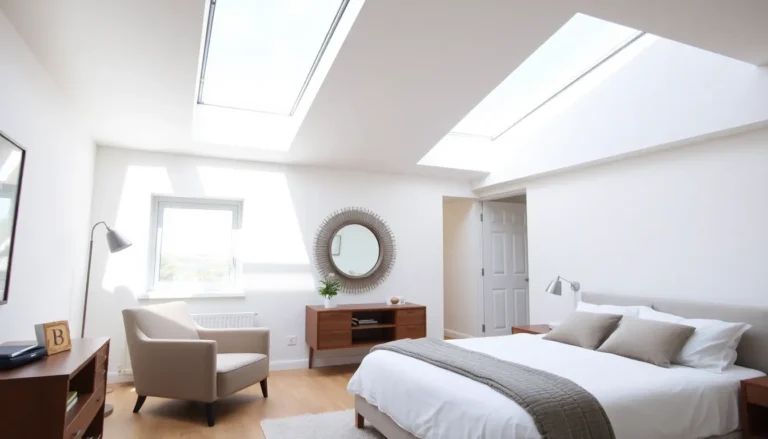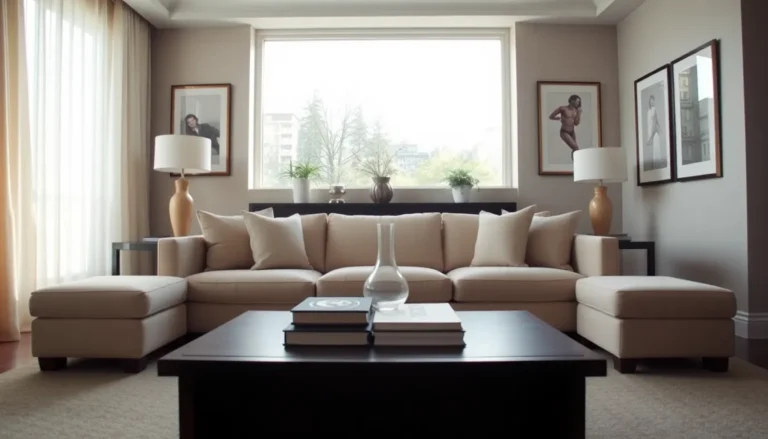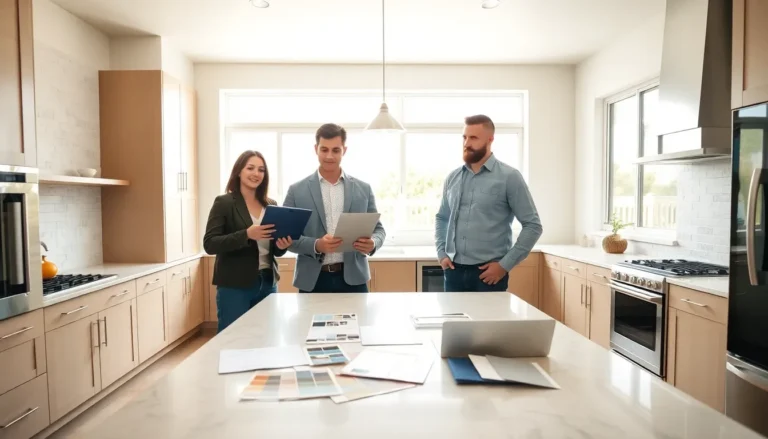If you’ve ever walked into a space and thought, “Wow, this feels like a sophisticated throwback to the 50s.” you may have stumbled into a mid century modern masterpiece. The allure of mid century modern interiors lies not only in their aesthetic appeal but also in their clever design principles. Armed with clean lines, open spaces, and a delightful dose of functional artistry, these interiors have stood the test of time. Let’s jump into the captivating world of mid century modern design, where every piece tells a story and every room feels like a curated gallery.
Table of Contents
ToggleThe Origins Of Mid Century Modern Design
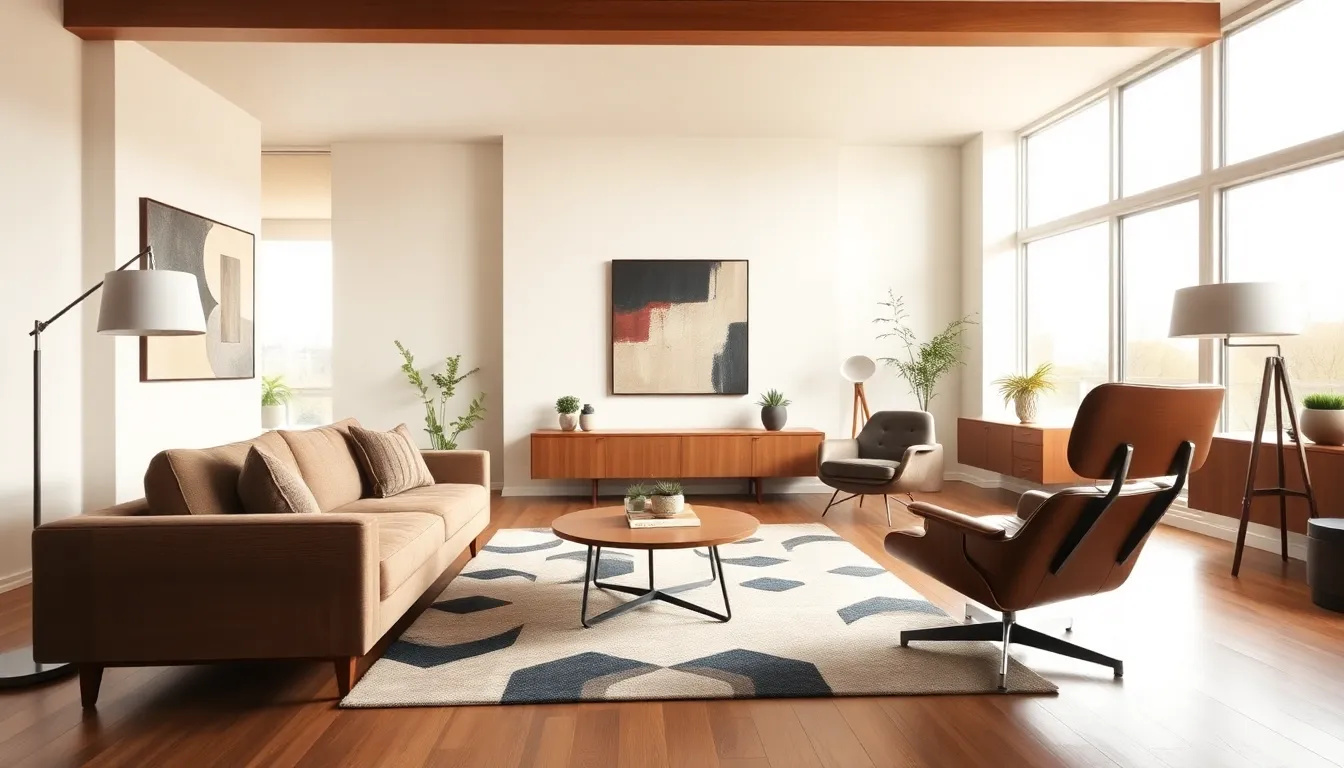
Mid century modern design took root in the 1940s and flourished through the 1960s. Grounded in the aftermath of World War II, this style emerged against a backdrop of social change and technological advancements. Designers sought to create spaces that embraced new lifestyles, favoring minimalistic forms over ornate decor. Think iconic names like Charles and Ray Eames, whose innovative approach to furniture design revolutionized the industry. Their work epitomized the philosophy of this movement: functional yet stylish, approachable yet sophisticated.
The name itself, a catchy label, brought together various design approaches, including the Bauhaus and the Scandinavian design wave. Each of these influences pushed the boundaries of traditional craftsmanship, favoring mass production and accessibility. Suddenly, modern design was available to the masses, leaving a lasting impact that still resonates in today’s homes.
Key Characteristics Of Mid Century Modern Interiors
Mid century modern interiors flaunt several defining characteristics that make them instantly recognizable. First, the emphasis on simplicity is paramount. These spaces prioritize function without sacrificing style. Clean lines and organic forms blend seamlessly, creating an effortless flow.
Large windows are another signature feature, allowing natural light to pour in and connect indoor spaces with nature. This connection with the outdoors is a hallmark of the design philosophy, fostering a harmonious living environment. Also, open floor plans are common, discarding unnecessary barriers to encourage a sense of community and ease of movement.
Another noteworthy characteristic is the innovative use of materials. From molded plastics to rich woods like walnut and teak, these elements create a tactile experience that adds depth and warmth to spaces. The balance between old and new materials gives mid century modern interiors a unique timelessness.
Essential Elements Of Mid Century Modern Decor
Mid century modern decor often revolves around a few essential elements:
Color Palettes And Textures
Vibrant hues punctuate these spaces. Think earthy tones combined with splashes of bold colors like teal, mustard, or orange. Whether it’s a sunny yellow sofa gracing a minimalist living room or soft pastels adorning the walls, color is used strategically to evoke feelings of comfort and creativity.
When it comes to textures, mix materials for a truly dynamic effect. Pair sleek leather with cozy wool or tactile linens for an engaging sensory experience.
Furniture Styles And Iconic Pieces
Furniture design during this era was as eclectic as it was functional. Pieces often boast a sculptural quality, turning furniture into art forms. Iconic designs like the Eames lounge chair and the tulip table became coveted items, each symbolizing a blend of style and comfort.
Every room should feature a statement piece, something that draws the eye and sparks conversation. Whether it’s a striking bookshelf or an elegantly designed armchair, these elements elevate the overall aesthetic of mid century modern interiors.
Integrating Mid Century Modern With Contemporary Styles
Blending mid century modern pieces with contemporary decor can create intriguing contrasts in your home. A sleek, minimalist couch paired with vintage mid century chairs can seamlessly merge two aesthetics, allowing for a visually striking space. This cross-pollination honors the charm of the past while embracing the needs of modern living.
Adding modern art or industrial-style light fixtures can further bridge the eras, giving a fresh twist to classic designs. To maintain harmony, choose colors and materials that complement each other, ensuring a cohesive look throughout the space. This thoughtful curation of elements celebrates both the heritage of mid century modern design and the sleekness of contemporary style.
Tips For Achieving A Mid Century Modern Look
Achieving a mid century modern look in your home doesn’t require an extensive remodel. Here are some practical tips:
- Start with the Layout: Open floor plans are your friend. Create a seamless flow between spaces and prioritize functionality.
- Embrace Natural Light: Use large windows or strategically positioned mirrors to maximize natural light. This creates an airy atmosphere that’s fundamental to mid century design.
- Curate Your Furniture: Invest in key pieces that speak to this era’s style. Focus on clean lines, simple forms, and functional designs.
- Play with Color: Don’t shy away from bold tones. Choose a signature color and let that mingle throughout your decor, creating a unified aesthetic.
- Accessorize Wisely: Select accessories judiciously. A few well-placed pieces, think a brightly colored vase or a retro lamp, can make a significant impact without overwhelming the space.


